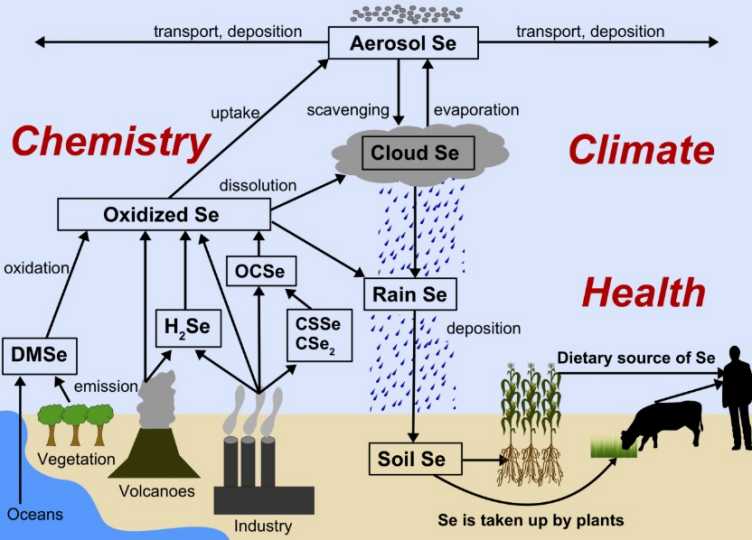Global sensitivity analysis in atmospheric chemistry models
Description

Selenium is an important micronutrient for both animals and humans. Even though it is naturally available in agricultural soils, some regions of the globe have been reported to be at risk of deficiency. To understand the Selenium atmospheric cycling process, global aerosol-chemistry-climate models have been developed. Such models are high-dimensional, time-consuming, and moreover, extremely sensitive to variations in boundary and initial conditions.
This project aims at introducing uncertainty quantification in such atmospheric chemistry models. More specifically, we consider the so-called SOCOL-AER model developed in the Institute of Atmospheric and Climate Science at ETH Zurich. This model is approximated using polynomial chaos expansions, a surrogate model calibrated through the forward run of the original model on a few selected points. A global sensitivity analysis is then carried out in order to identify which input parameters contribute the most to the output variability. This information will, in turn, provide insights upon which parts of the atmospheric Selenium process needs to be better characterized in future studies.

Selen ist ein wichtiger Mikronährstoff für Tiere und Menschen. Obwohl es in landwirtschaftlichen Böden natürlicherweise enthalten ist, wurde in einigen Regionen der Erde das Risiko eines Selenmangels festgestellt. Um den atmosphärischen Selen-Zyklus zu verstehen, wurden globale Aerosol-Chemie-Klimamodelle entwickelt. Solche Modelle sind hochdimensional, zeitaufwändig und extrem empfindlich gegen Änderungen der Rand- und Anfangsbedingungen.
Dieses Projekt zielt darauf ab, die Ungewissheitsquantifizierung in solchen atmosphärischen Chemiemodellen einzuführen. Insbesondere betrachten wir das sogenannte SOCOL-AER-Modell, welches im Institut für Atmosphären- und Klimaforschung der ETH Zürich entwickelt wurde. Dieses Modell wird mit polynomial chaos expansions approximiert, einem Emulator, der auf der Basis von Auswertungen des ursprünglichen Modells an einigen ausgewählten Punkten erstellt wird. Anschließend wird eine globale Sensitivitätsanalyse durchgeführt, um zu ermitteln, welche Eingabeparameter am meisten zur Ausgabevariabilität beitragen. Diese Informationen werden wiederum Aufschluss darüber geben, welche Teile des atmosphärischen Selen-Prozesses in zukünftigen Studien besser charakterisiert werden müssen.